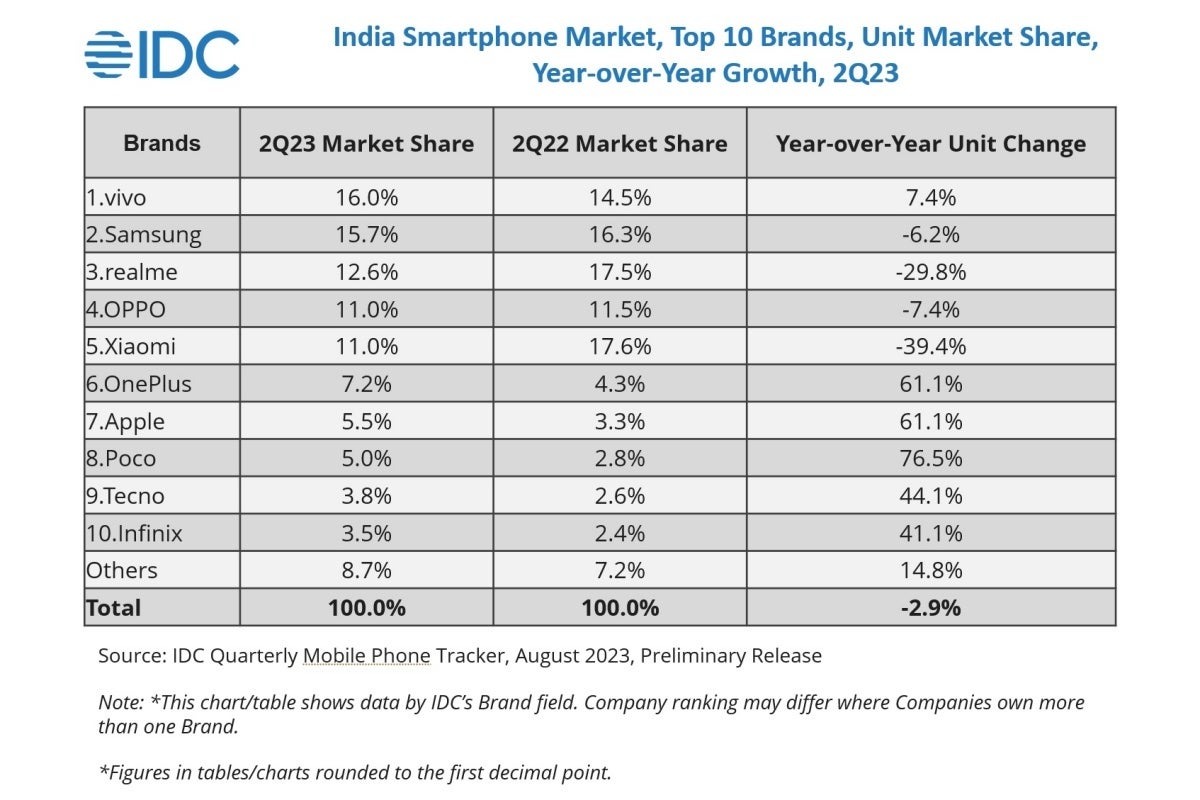One big winner and a few smaller ones
If you’re not very familiar with the “traditional” pecking order in the world’s second-largest country by population, you might also be surprised to hear the name of the new leader. This is not Apple or even Xiaomi (which did hold first place at one point last year), but Vivo, a brand that doesn’t exist in the US and that was ranked outside of India’s top three this time in 2022.
Of these three companies, only Vivo improved its unit figures year-on-year, and the same actually goes for OnePlus, Apple, Poco, Tecno, and Infinix, which are the brands ranked sixth to tenth overall right now. In fourth and fifth places, Oppo and Xiaomi saw their sales dip as well, which undoubtedly contributed to a 2.9 percent decline for the local market as a whole.
Prices are down, premium phones are up

The success of the latter device (and others like it) explains why the average selling price of 5G smartphones in the region is down, as is the ASP of all smartphones. That’s one indicator that was still increasing in recent quarters, which means most major vendors have had to become aggressive with their promotions and discounts to get the market to stabilize.
That’s definitely not bad for end users, many of whom are now keener than ever to buy “premium” phones from Apple, OnePlus, Samsung, and other brands. The premium ($600+) segment continues to grow like no other, followed by the “mid-to-high-end” ($400 to $600) category, while the mid-range segment is described as “flat” and the once-thriving sub-$200 class has started to contract, nonetheless reigning supreme over all other categories.
It’s unclear if India’s smartphone market will return to growth in Q3 and Q4, but even if it does, it seems unlikely that the numbers will grow at the needed pace to end the year on a positive note compared to 2022.

